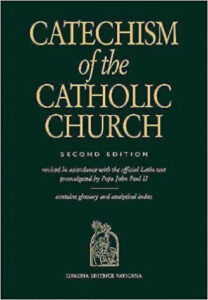 Catechism of the Catholic Church
Catechism of the Catholic Church
You can purchase a copy of the Catechism of the Catholic Church at bookstores or online, or you can access this digital version.
The word “catechesis,” closely related to the word “catechism,” comes from the Greek language; it originally  pertained to theatrical performances. It means “to make resound like an echo.” Early Christians used the term to apply to someone who proclaims and teaches the faith—a person who echoes what he or she has learned from Jesus. At the same time, catechesis is intended to produce a corresponding echo in the hearts and minds of listeners, who respond to the truth of the Word that’s heard. The Church considers catechesis to be an echo of the voice of Jesus himself.
pertained to theatrical performances. It means “to make resound like an echo.” Early Christians used the term to apply to someone who proclaims and teaches the faith—a person who echoes what he or she has learned from Jesus. At the same time, catechesis is intended to produce a corresponding echo in the hearts and minds of listeners, who respond to the truth of the Word that’s heard. The Church considers catechesis to be an echo of the voice of Jesus himself.
read the Catechism—what is the Church’s view about catechesis?
Paragraph 2688 of the Catechism of the Catholic Church directly relates catechesis to Bible study and prayer, cautioning about the importance of teaching about the faith. 
2688 The catechesis of children, young people, and adults aims at teaching them to meditate on the Word of God in personal prayer, practicing it in liturgical prayer and internalizing it at all times in order to bear fruit in a new life. Catechesis also is a time for the discernment and education of popular piety. The memorization of basic prayers offers an essential support to the life of prayer, but it is important to help learners savor their meaning.
Both Bible study and lectio divina aim at providing a spiritual opportunity in which dialogue with God can occur. It’s important to understand what the words of Scripture mean before attempting to use Bible passages as a basis for prayer. The Catechism of the Catholic Church is useful for shedding light on difficult passages and for avoiding problems related to misinterpretation of Scripture.
The Catechism of the Catholic Church contains the Deposit of Faith, or Divine Revelation, the wealth of the Church. The teachings contained in this book represent what is believed by all Catholics. This unity of believers is a valuable inheritance passed on to Catholic Christians by the Patristic Fathers, a group of early teachers in the Church who lived from the time of the Apostles until the middle of the 8th century. These fathers of the early Church worked hard to keep their new household together, to teach and discipline their children, to preserve their family’s wealth, and to protect the family from danger.
Revelation consists of the mysteries of our faith. A religious mystery is something that would remain 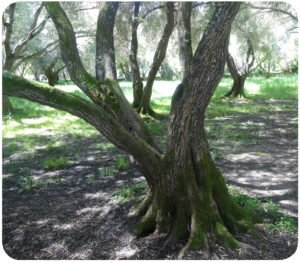 unknown if God didn’t choose to reveal it to humanity. After God reveals a mystery, men and women can understand it—but not fully. Divine Revelation cannot be changed or altered, although it can develop organically, like a tree. The Deposit of Faith (Divine Revelation), relies on Scripture and Tradition, and it is guarded by the Magisterium of the Church. Scripture is God’s word recorded in the Old and New Testaments of the Bible. Tradition is what the Church believed and taught before anything was written down. The Magisterium consists of the bishops of the world acting in union with the pope.
unknown if God didn’t choose to reveal it to humanity. After God reveals a mystery, men and women can understand it—but not fully. Divine Revelation cannot be changed or altered, although it can develop organically, like a tree. The Deposit of Faith (Divine Revelation), relies on Scripture and Tradition, and it is guarded by the Magisterium of the Church. Scripture is God’s word recorded in the Old and New Testaments of the Bible. Tradition is what the Church believed and taught before anything was written down. The Magisterium consists of the bishops of the world acting in union with the pope.
The books that make up the Catholic Bible were determined by the Magisterium at the Council of Carthage in 397. The Church today continues to pass on her Tradition in the form of encyclicals, apostolic letters, and other magisterial documents.
The earliest catechism, the Didache, dates from the 2nd century. Early Church fathers, including St. Cyril of Jerusalem, St. Ambrose, and St. Augustine, all made use of catechisms to teach the faith to adults who wished to become Christian. Interestingly, the first short catechism in question-and-answer format was written by Martin Luther.
The Roman Catechism of 1566 was created shortly after the Council of Trent in response to the Protestant Reformation, and this catechism was used by the worldwide Church for more than 400 years. The Baltimore Catechism, a question-and-answer catechism popular in the United States and other English-speaking countries prior to the publication of the current Catechism, was based on a translation of a catechism by St. Robert Bellarmine written in 1597.
The idea of the universal Catechism of the Catholic Church was suggested in 1985 at a meeting of bishops called by Pope St. John Paul II for the purpose of discussing catechesis. Four committees of bishops worked on the Catechism, and the first draft was distributed to bishops all over the world. It drew more than 20,000 proposed amendments, which then were reviewed for possible inclusion. The original committee worked on the Catechism in the French language. In 1994, the first English edition of the Catechism became available. The second edition includes revisions, a glossary, and an index, and it is translated from the official Latin, which is itself a translation from the original French. This Latin typical edition was printed in English in 2000.
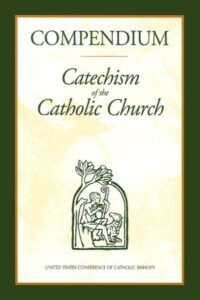
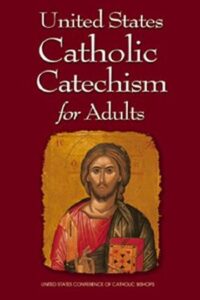
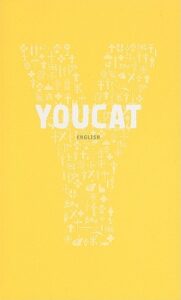 There are other English catechisms based on the Catechism of the Catholic Church—notably the Compendium, the United States Catholic Catechism for Adults, and the YouCat—but the 904-page Latin typical edition is an ideal resource for Bible study. Its numerous Scripture citations and cross references simplify tracking content related to particular biblical passages.
There are other English catechisms based on the Catechism of the Catholic Church—notably the Compendium, the United States Catholic Catechism for Adults, and the YouCat—but the 904-page Latin typical edition is an ideal resource for Bible study. Its numerous Scripture citations and cross references simplify tracking content related to particular biblical passages.
The Catechism derives its authority from the two magisterial documents at the beginning of the book—Fidei Depositum (Guarding the Deposit of Faith) and the apostolic letter Laetamur Magnopere (It Is a Cause for Great Joy). This and the book’s clear and precise treatment of Church teaching make the Catechism of the Catholic Church a reliable source to turn to when dealing with questions relating to Catholic doctrine. You can read other important Church writings in ex libris—magisterial documents.
10 tips to make using the Catechism easier
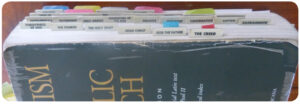
To get the best use from the Catechism of the Catholic Church, it’s wise to become acquainted with some of the many different aspects of the book.
- Tabs can help you to familiarize yourself with the main divisions of the Catechism. You’ll find adhesive tabs specially designed for the Catechism at your local Catholic bookstore or online.
- Reading the two magisterial documents reprinted in the beginning pages of the Latin typical edition—Fidei Depositum (Guarding the Deposit of Faith) and Laetamur Magnopere (It Is a Cause for Great Joy)—provides an understanding of the history and mission of the Catechism.
- “Practical Directions for Using the Catechism of the Catholic Church” are found in paragraphs 18–22 of the book.
- To learn how a particular Scripture passage relates to Church teaching, check to see if the passage is listed in the Index of Citations. If so, the listing will refer to paragraphs in the Catechism that cite the passage you’re interested in learning more about. Although not every Bible passage is cited, Scripture forms the basis of and supports Catholic doctrine. Extensive Scripture references are found on nearly every page of the Catechism. (Although there are no glaring errors in the main pages of the Catechism, heavy users of the Index of Citations likely will spot several there. The English translation of the Index doesn’t share the approval of the Latin typical edition given in the apostolic letter Laetamur Magnopere (It Is a Cause for Great Joy) of Pope St. John Paul II, by which the Latin text of the main content was approved and promulgated.)
- The Index of Citations locates various Church documents cited in the Catechism, and it provides references pertaining to the writings of saints, fathers, and doctors of the Church who are quoted within the pages of the book.
- The list of Abbreviations identifies which book of the Bible or which Church document is being cited. The Companion to the Catechism of the Catholic Church is a separate volume that contains all of the texts referred to in the Catechism.
- Abbreviations are used in the Footnotes that appear at the bottom of the pages. These footnotes are cross-referenced with the Index of Citations at the back of the Catechism.
- The Glossary functions as a somewhat limited dictionary, defining various Catholic terms with which readers may be unfamiliar. Entries in this section point toward specific paragraphs in the Catechism where more information may be found.
- The Index in the back of the book allows readers to look up material by subject or topic. The Table of Contents functions in the same way but in a much more abbreviated form.
- Like other magisterial documents, material in the Catechism is referenced by paragraph number instead of page number to make communication easier for people using different editions or translations in different languages. The italicized paragraph numbers that appear in the side margins direct readers to related paragraphs elsewhere within the Catechism. Following these cross references provides readers with a better sense of the fullness of the Deposit of Faith found within the pages of the Catechism of the Catholic Church.
